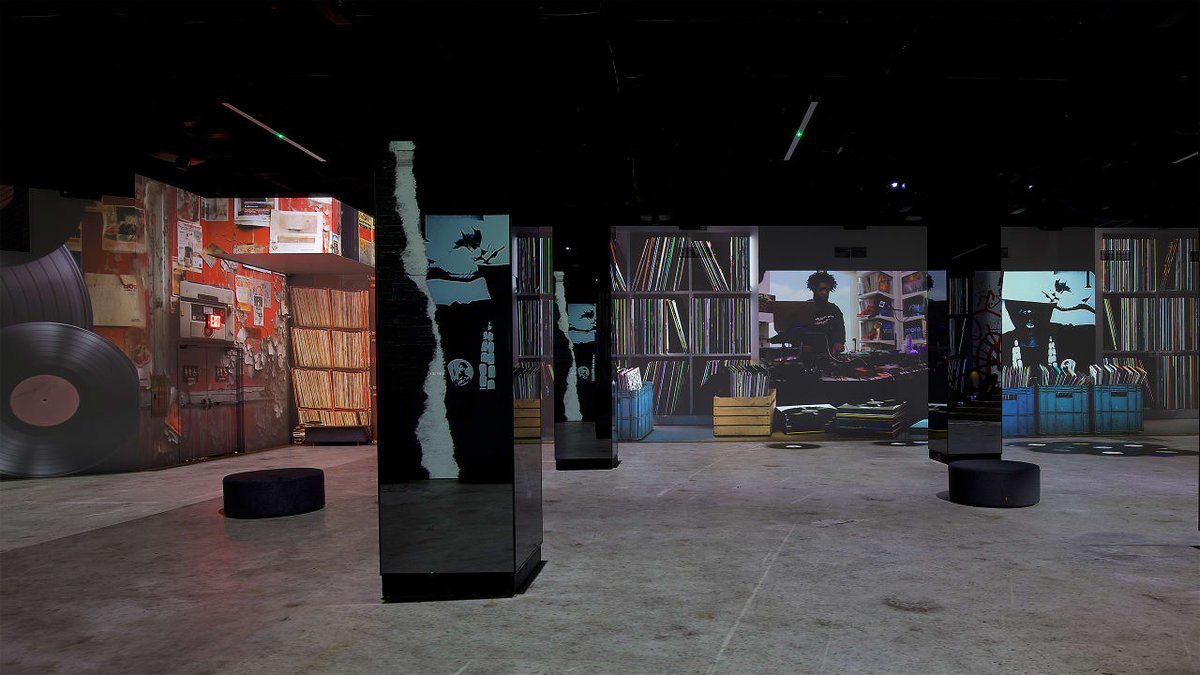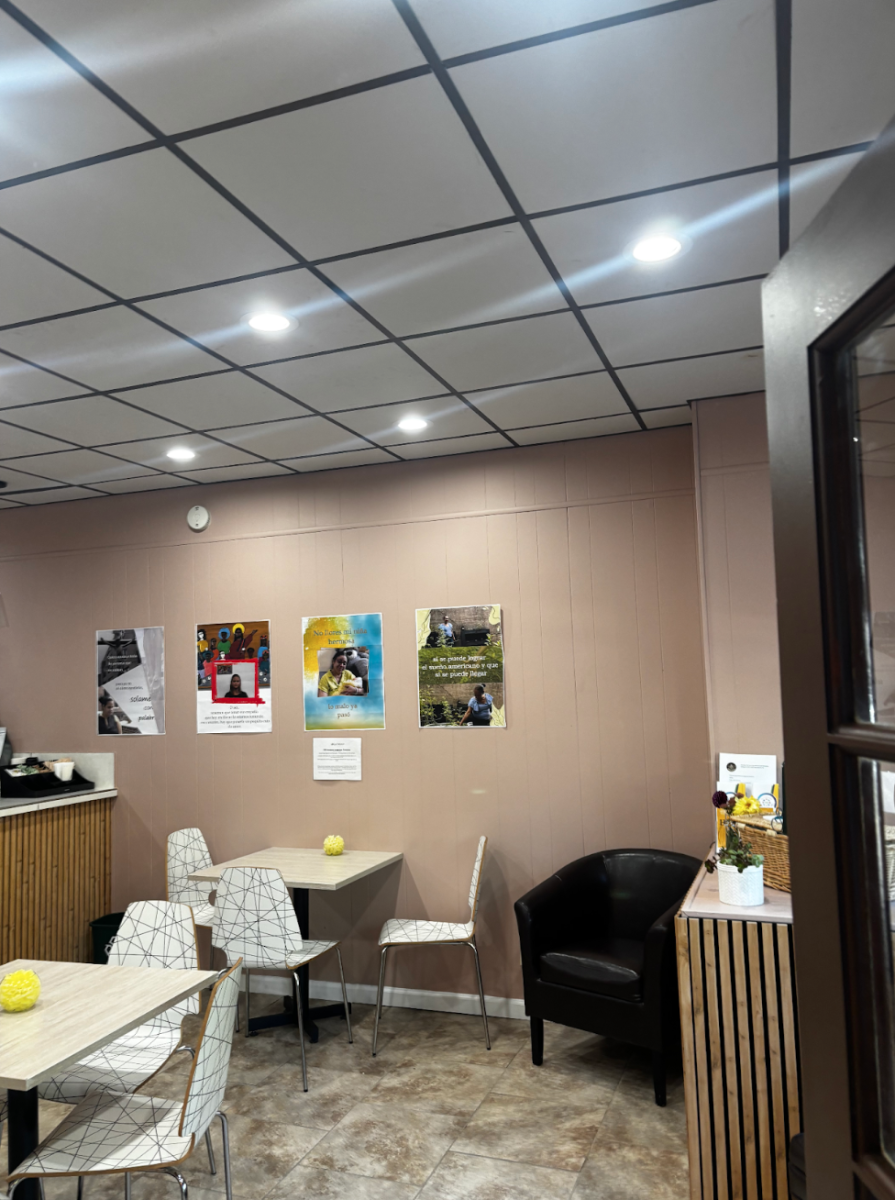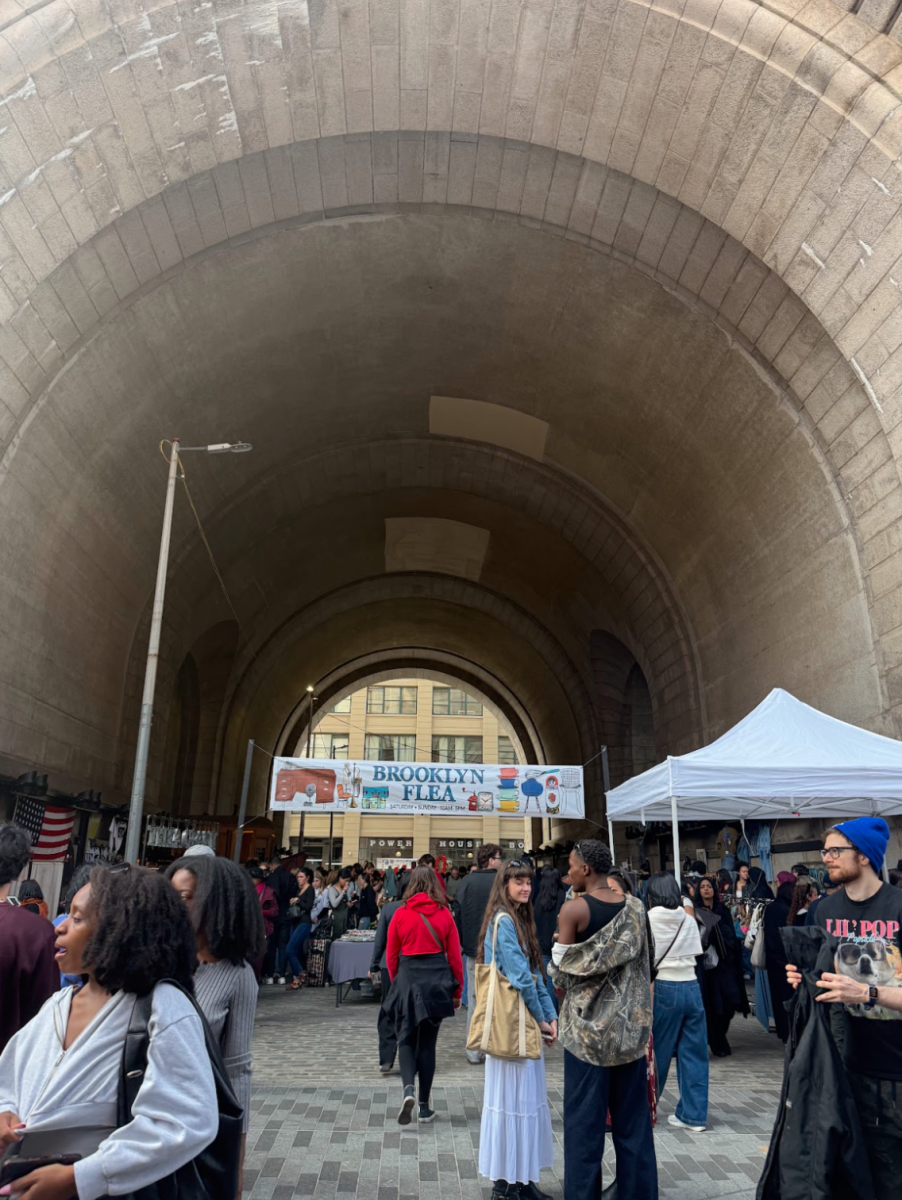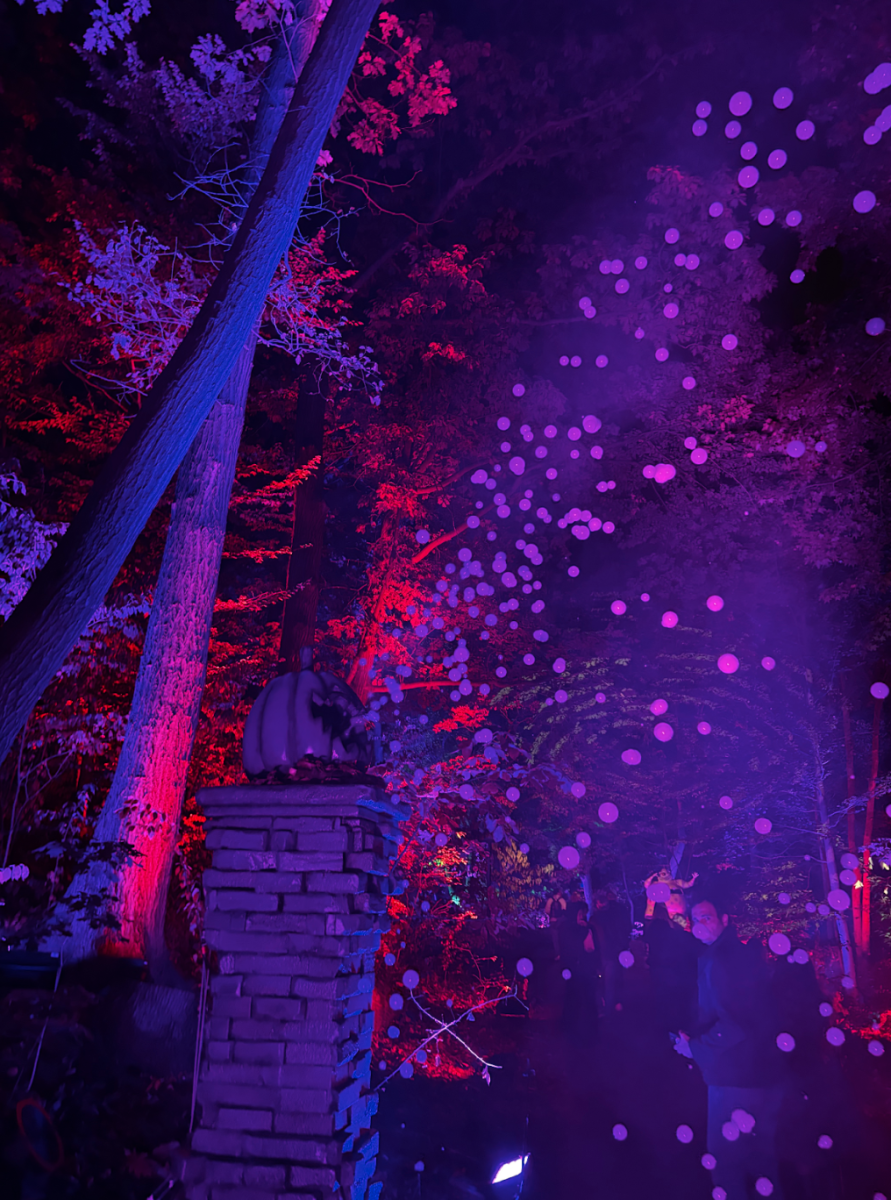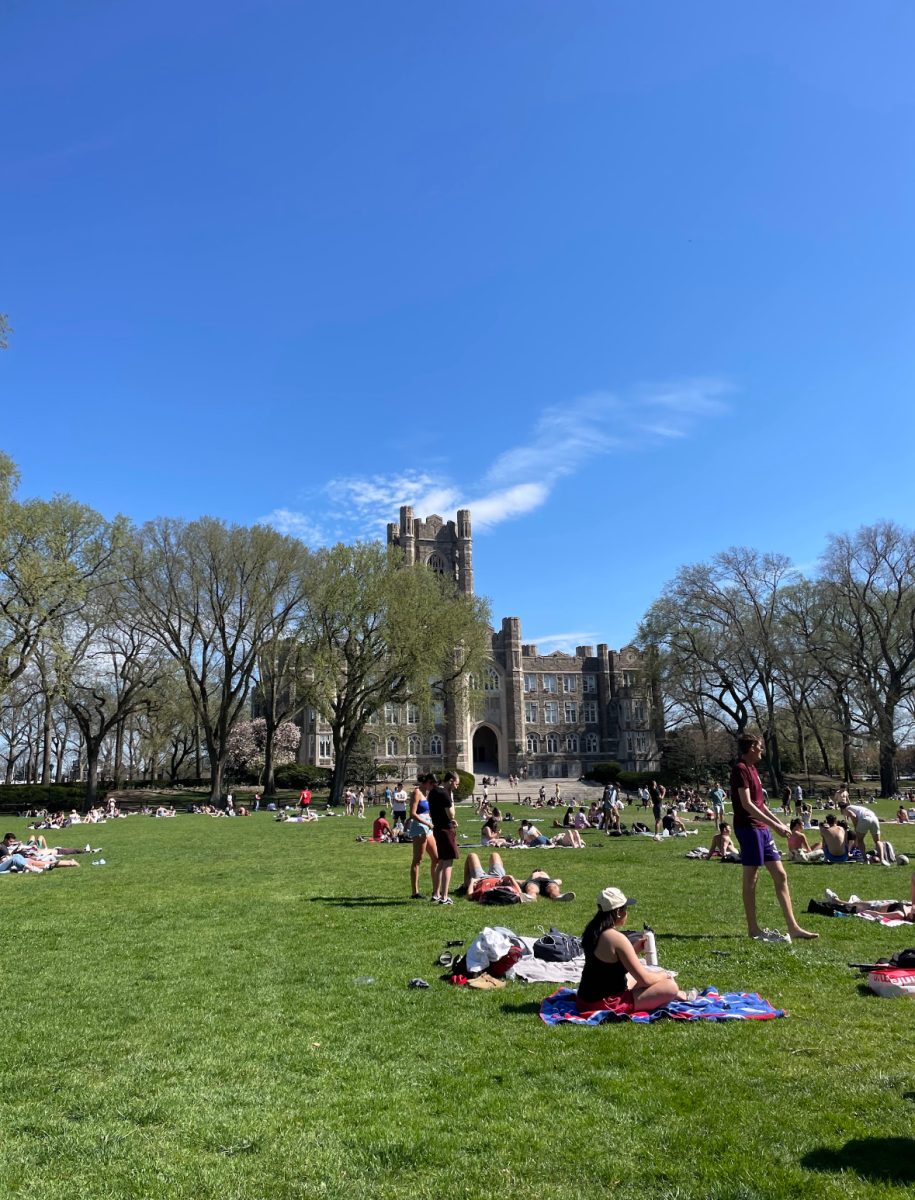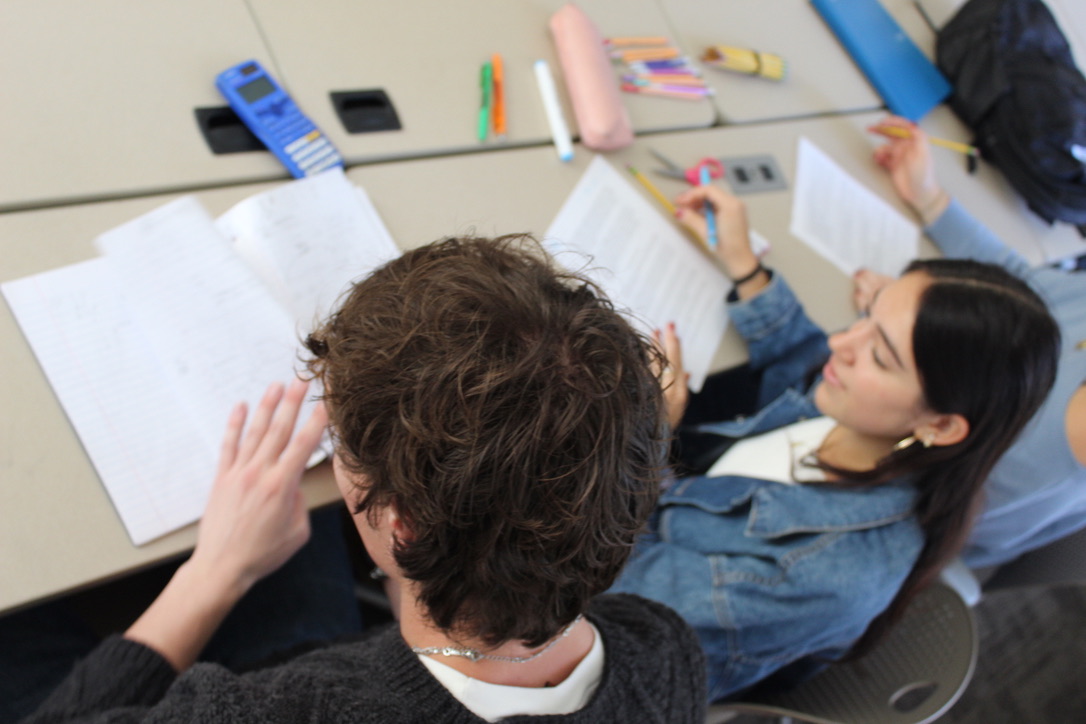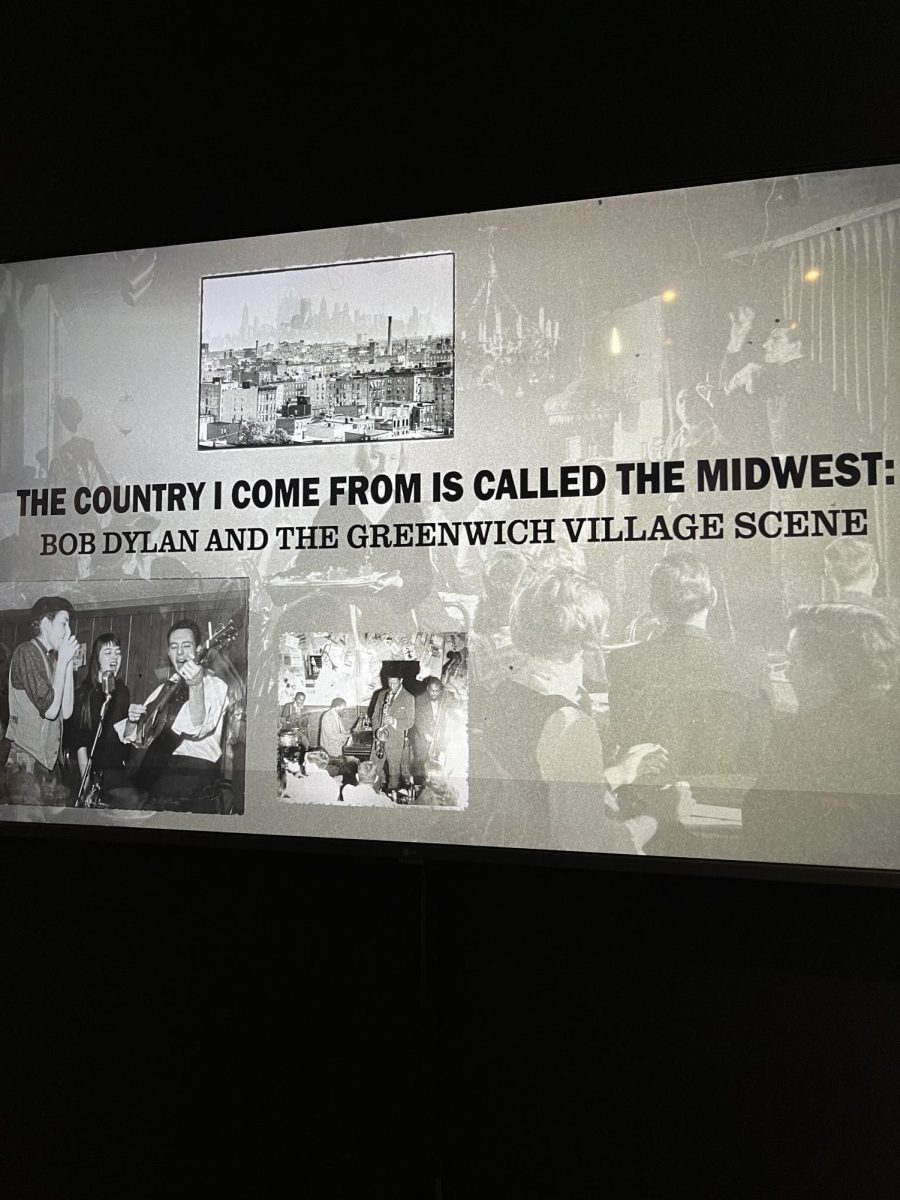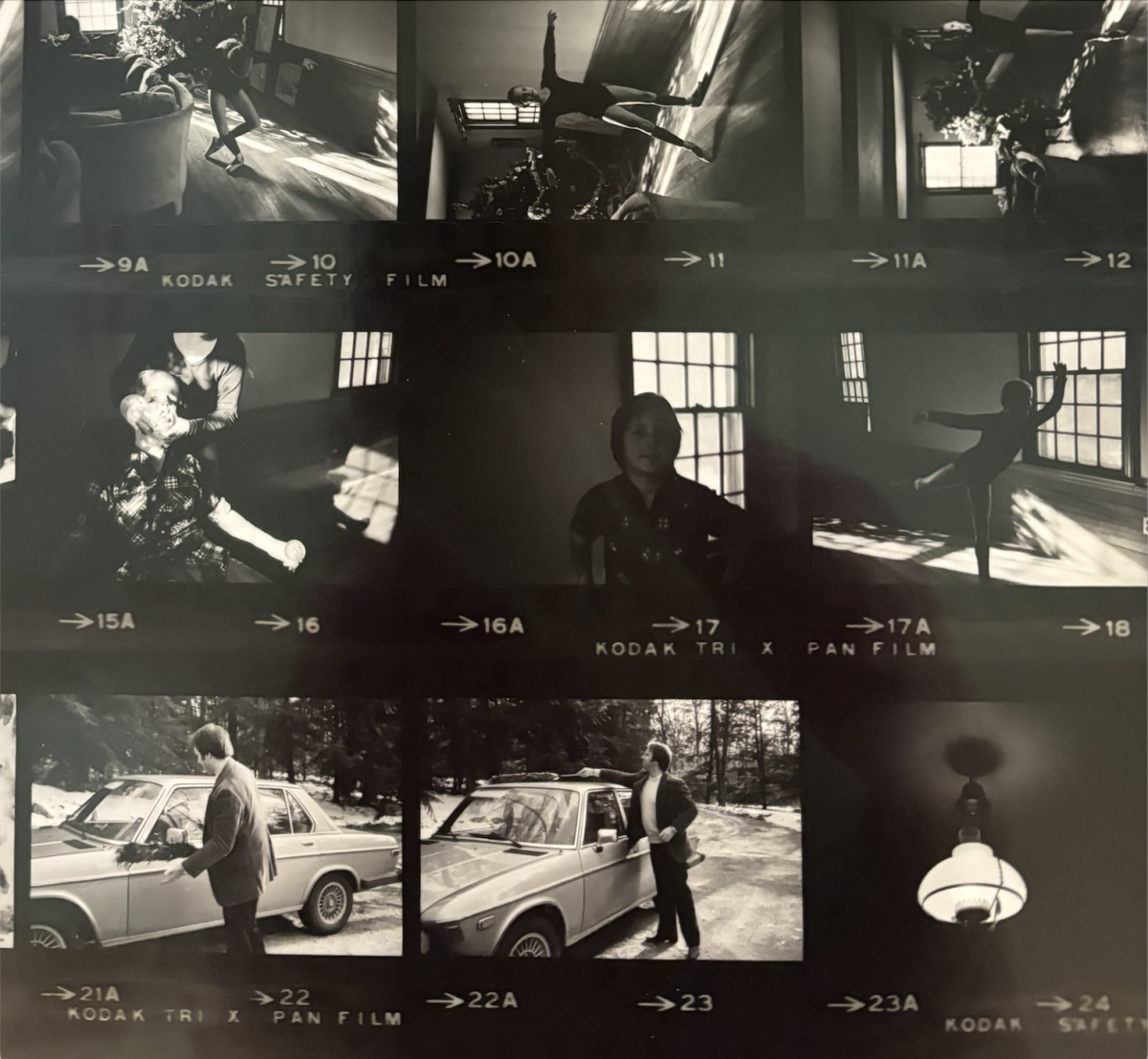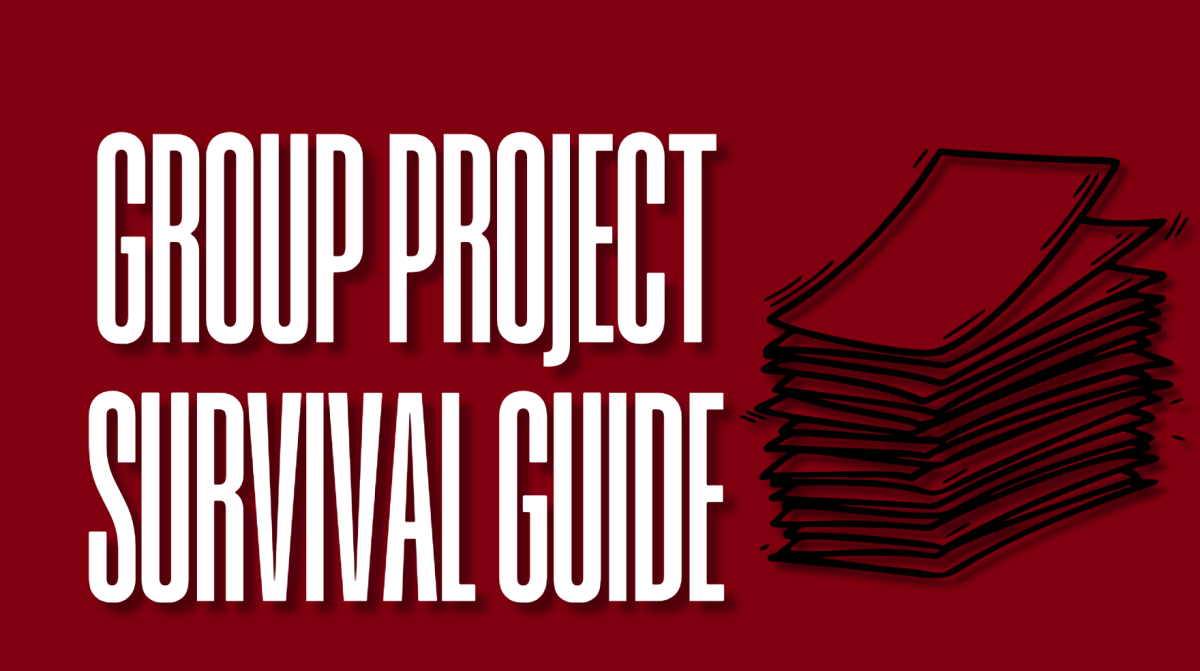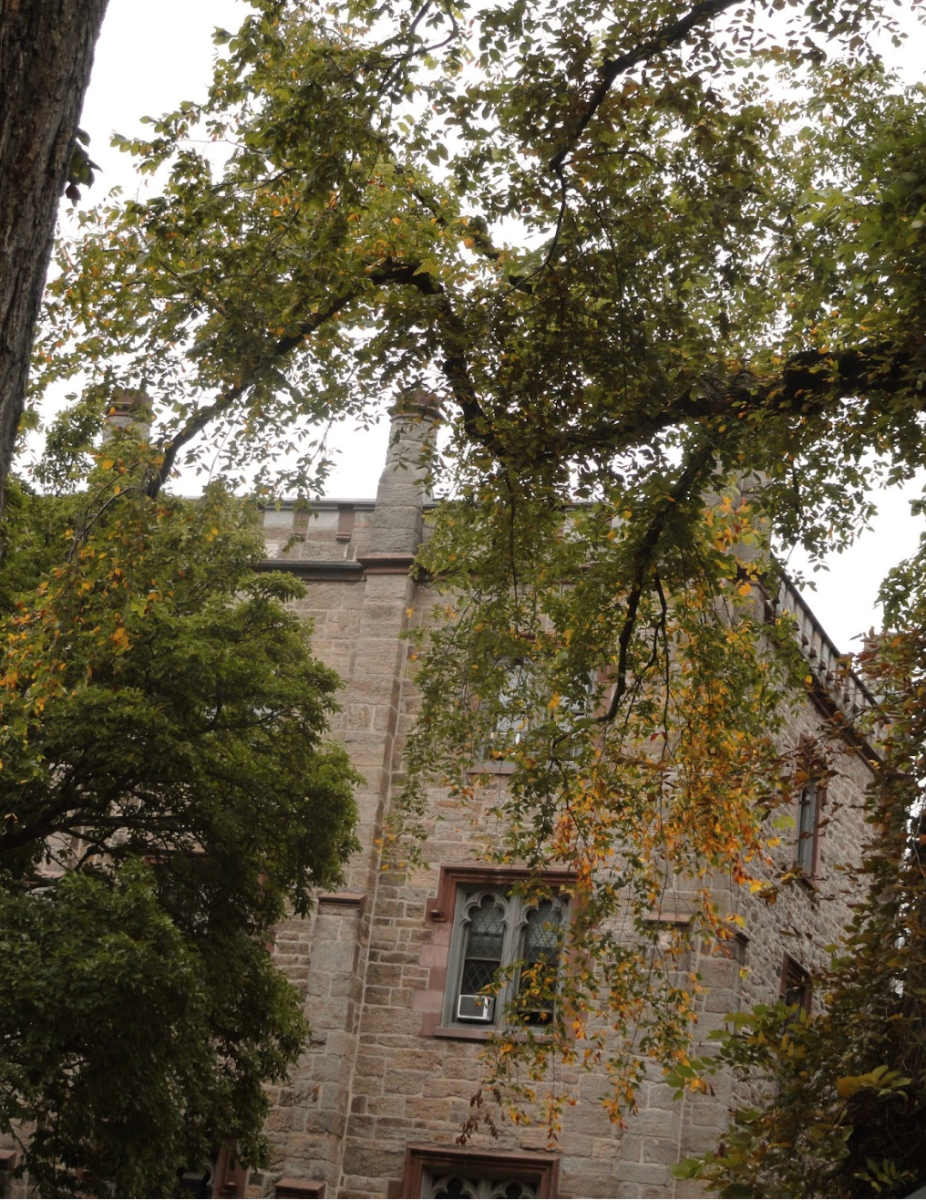The colorful and loud rooms in the Hall de Lumières’ “Hip-Hop Til Infinity” made the trek all the way to the FiDi absolutely worth my Wednesday. My first impression of the exhibition was that it simply seemed like fun — I would learn about key people and places. Little did I know what I was going to walk right into. If I were prompted to choose five words for this exhibition they would be: loud, informative, organized, immersive and fun. A unique and lively exhibit sitting right at 49 Chambers St. walks you through the five decades of hip-hop.
From the moment I scanned my student discounted ticket, my assumption that it would be loud immediately came to fruition. As I was blasted with familiar songs, I read the background on the panel and thought, “Wow, there is a lot more to hip-hop than I thought.” I am not someone who follows hip-hop or rap but I did love the Super Bowl LVI Halftime show with all the icons of hip-hop, including Dr. Dre, Snoop Dogg and Mary J. Blige.
One panel explained that hip-hop was born by “isolating the breaks on a record” at a back-to-school house party in the Bronx, N.Y. Along with underlining the importance of the Bronx, the Hall de Lumières does a fantastic job showcasing other cities around the states, including my hometown of Houston. Important cities in rap’s history are highlighted by showing a map of certain points in various cities on the back wall. On another wall were photos and biographies of key hip-hop artists from each city who changed the genre in their own way.
This being one of the first things to see upon walking in immediately captivates you to sit and tune into the map of hip-hop icons, so you can understand more about the “who” and the “where.” Big screens in the main atrium displayed live footage of the first street performers and their dancers, who danced on the breaks of the track, hence the term breakdancer.
As I walked down the stairs into a replica street, I saw videos along the illuminated walls that broke down the “how” of hip-hop. The videos explained captivating facts, from the very moves of breakdancing to the spinning of the record and even going as far as the graffiti and art that was born from this movement. One 10-minute video elaborates on Kool Herc’s isolation of the drum beat and how his Jamaican roots were a foundation of hip-hop in New York City.
Once I had finished watching this, I walked down the stairs to find I had really been immersed in the music. I was in a small room with mirrors on every wall and a screen showing music videos and concert footage: The Music Video Box. To enter this time capsule, you walk past Ralph McDaniels’s story of how he created the “Music Video Box” television show, which is what is shown in this room and doubles as the Hall’s vault.
If someone who is new to hip-hop is looking to learn more about the sounds and how they came to rise in the Bronx, this is the place for them. Even a hip-hop connoisseur would come to appreciate how the exhibit was put together, how immersive it was and its uniqueness. I liked how it wasn’t a quiet museum; it was loud, with familiar songs playing from the moment I walked in.
While walking through this exhibit, something I wish I knew was when they would replay these short films that told you everything about people and places. Having a schedule for when the videos in the atrium would play again would have helped me gain a better understanding of what I would go on to learn when I went downstairs to the basement.
Although this is a great opportunity for anyone to go and learn about hip-hop, the target audience for this would definitely be music lovers or avid fans who want to learn more about how the sounds and chords were made, such as a songwriter or rapper.





































































































































































































